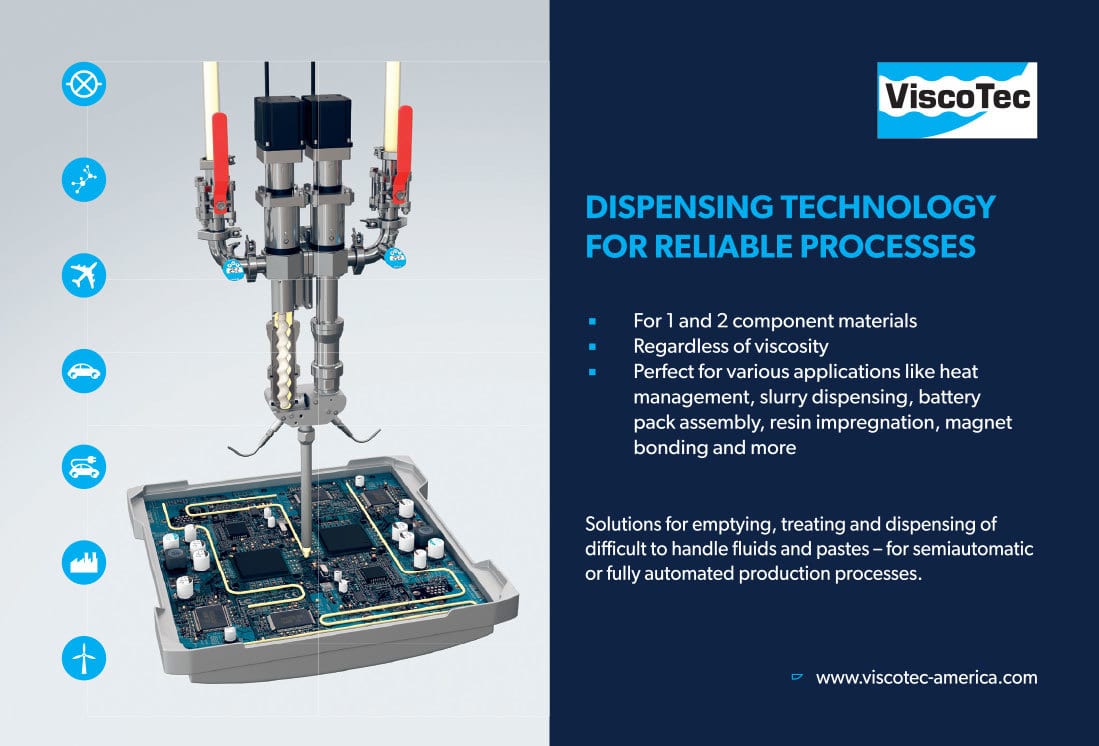
AVs and EVs spur tiremakers to develop new products.
Re-Inventing the Wheel
Nathan Eddy // Contributing Writer
The automotive industry is developing new types of tires that meet the unique challenges of electric and autonomous vehicles. Photo courtesy Michelin
The automotive industry is evolving toward new types of tire technology to meet the unique challenges of electric and autonomous vehicles. Long-time suppliers such as Bridgestone, Continental, Goodyear, Michelin and Pirelli, which have made rubber products since the dawn of the horseless carriage era, are scrambling to adapt to 21st century demands.
Increased vehicle weight and instant power delivery are just two specific considerations to account for when developing tires for electric vehicles. EVs have increased the need to develop innovative materials for tires that deliver lower rolling resistance compared to an internal combustion engine (ICE) car, while at the same time improving resistance to wear and increasing performance on all surfaces.
The rise of self-driving vehicle concepts like autonomous shuttles, which will have heavier load requirements, will also result in tires that must be more durable and more connected, capable of self-diagnosis and predictive analytics.
To achieve those objectives, some industry experts believe a 360-degree approach is needed in the design process, along with the development of a wide variety of materials that are both multifunctional and have the possibility to bypass traditionally accepted trade-offs.
Electric vehicles such as the Porsche Taycan demand a new breed of tires that reduce rolling resistance. Photo courtesy Pirelli
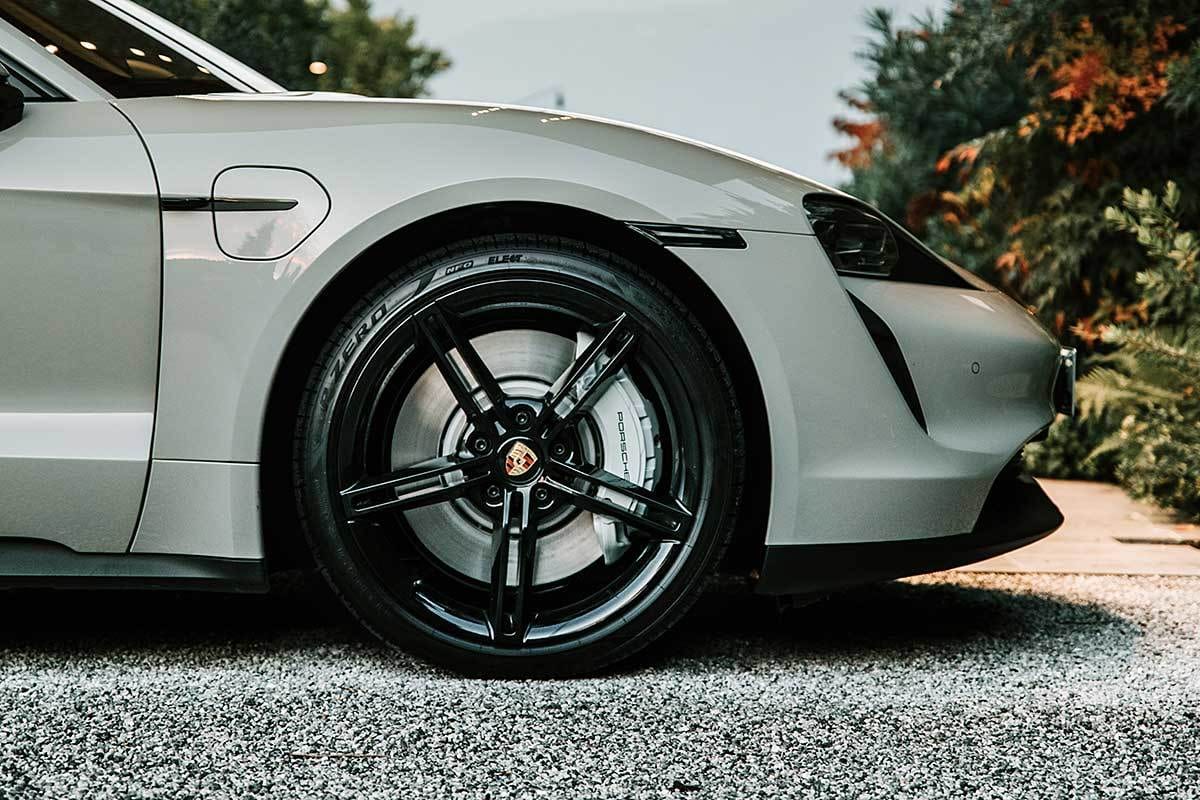
“The development of these materials doesn’t focus on just a single component of the tire, but instead takes in every element of the tire as a whole,” says Piero Misani, senior vice president of research, development and cyber at Pirelli. “It’s a process based on modelling and predictive measures, creating virtual tire characteristics that accelerate the whole process from development to [production].”
According to Misani, new products aimed at EVs, such as Pirelli’s P Zero Elect tire, need to be designed holistically using innovative materials that reduce rolling resistance, while at the same time reducing wear without altering the thickness of the tread pattern. This is developed alongside a structure that supports the vertical load and can also adequately put extra torque on the ground in all sorts of driving conditions.
“All this without compromising on acoustic comfort, which we achieve by reducing road noise thanks to a specific design of tread pattern and other technologies such as the Pirelli Noise Cancelling System (PNCS),” explains Misani.
PNCS technology consists of a special sound-absorbing material that is placed within the tire. It helps deaden air vibrations that would otherwise be transmitted to the inside of the vehicle. The benefits of this system can be felt both inside and outside of an EV.
According to Misani, some of the objectives Pirelli engineers have to address, such as noise, rolling resistance, wear and resistance to vertical loads, are technically opposed to each other. “For example, the need to reduce rolling resistance would lead you to design tires that are lighter with a thinner tread pattern—but this could, in turn, lead to a reduction in overall tire life,” he points out.
“On top of that, the increased weight of these vehicles and the extra torque available places bigger demands on the tires, increasing wear, as the tires are constantly working to put that power on the ground, even though the driver might not be aware of it,” notes Misani.
Pirelli recently introduced a high-load index tire for EV applications. Designed to provide low rolling resistance, the tire is able to support 20 percent more weight compared to a standard product. Its first application will be on the new Lucid Air sedan, which is being assembled in Casa Grande, AZ.
Reducing Road Noise
Electric vehicles require tires that can carry the heavier loads incurred by batteries, as well as withstand more torque than conventional ICE vehicles.
“There is also a need to mitigate road noise, which can be an issue with EVs because there is no engine to drown out the [sound] of the tires travelling over the roads,” says Russell Shepherd, technical communications director for Michelin North America. “This is something most of us don’t think about in ICE vehicles. But, when you spend time in an EV, it can become very noticeable.”
Michelin has been working on low resistance tire technology since the 1980s, when it experimented with adding silica in tread compounds. More recently, Michelin has been the tire supplier to the Formula E series.
The company’s Pilot Sport EV tires, which are being used on the Tesla Model Y, benefit directly from the progress Michelin has achieved over seven seasons of Formula E competition. It incorporates ElectricGrip Compound technology that features a hard compound for the center of the tread to provide the grip required to cope with the high torque characteristics of electric cars.
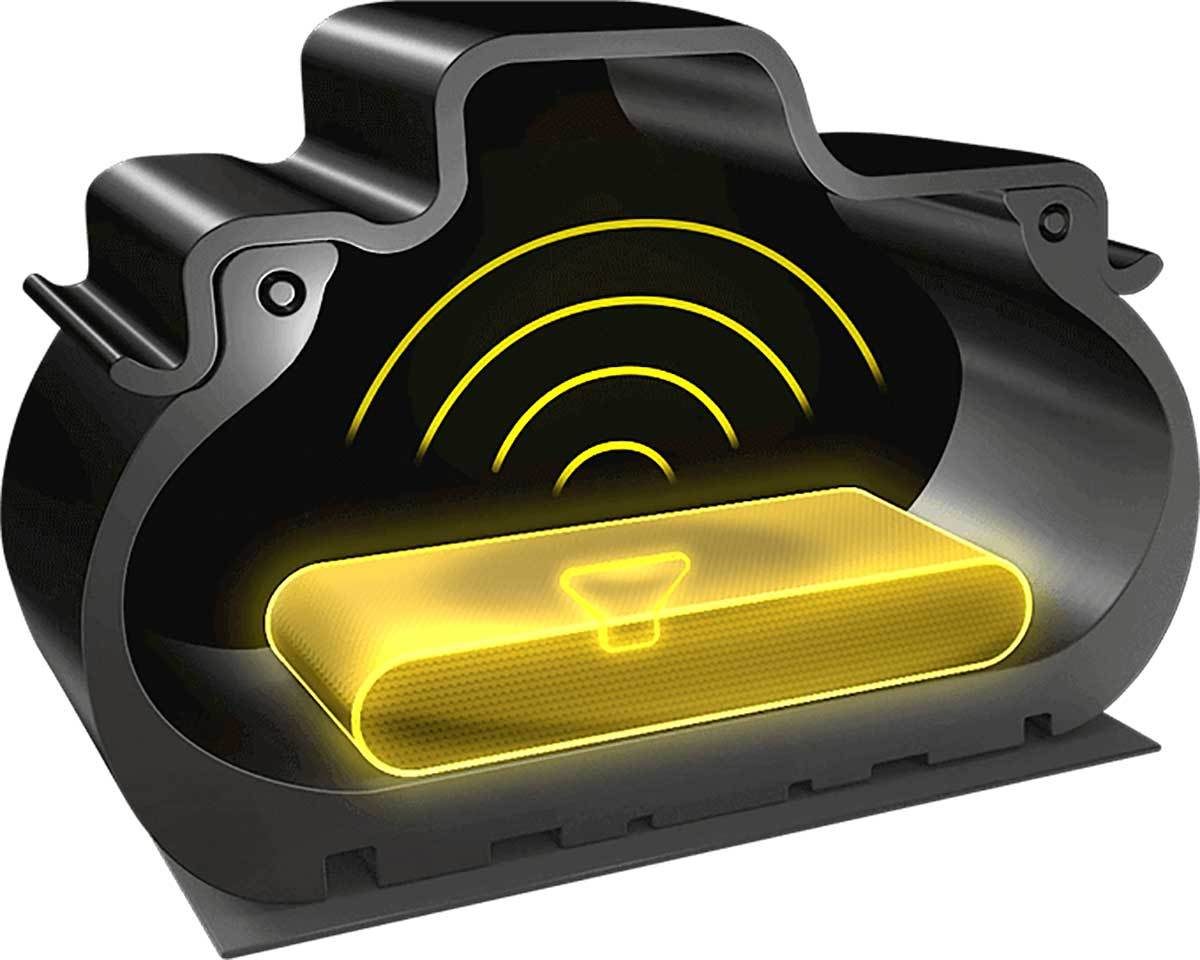
Special sound-absorbing material placed within a tire can help deaden air vibrations. Illustration courtesy Pirelli
The Pilot Sport EV line of tires use two tread compounds and represents the company’s first full line that is made to maximize the performance of EVs. It was developed as an EV tire and supports high torque loads, addresses noise and improves range. In addition, there is a separate tread compound on the shoulders, which is designed to lower rolling resistance.
“Low rolling resistance tires give electric vehicles greater range, which means longer distance before recharging or possibly less recharging needed during a typical week,” notes Shepherd. “These [new] compounds provide the handling that consumers expect from a high-performance vehicle, while preserving range.”
Michelin engineers also recently developed a Unique Puncture-proof Tire System (UPTIS) prototype, which is a combined airless tire and wheel assembly for passenger cars. It has already been successfully tested on the Chevrolet Bolt, and General Motors plans to equip other vehicles with the airless tire in 2024. UPTIS features an aluminum wheel and a flexible load-bearing structure made from glass-fiber reinforced plastic.
The Lucid Air will use tires that can withstand more torque and carry heavy battery loads. Photo courtesy Pirelli
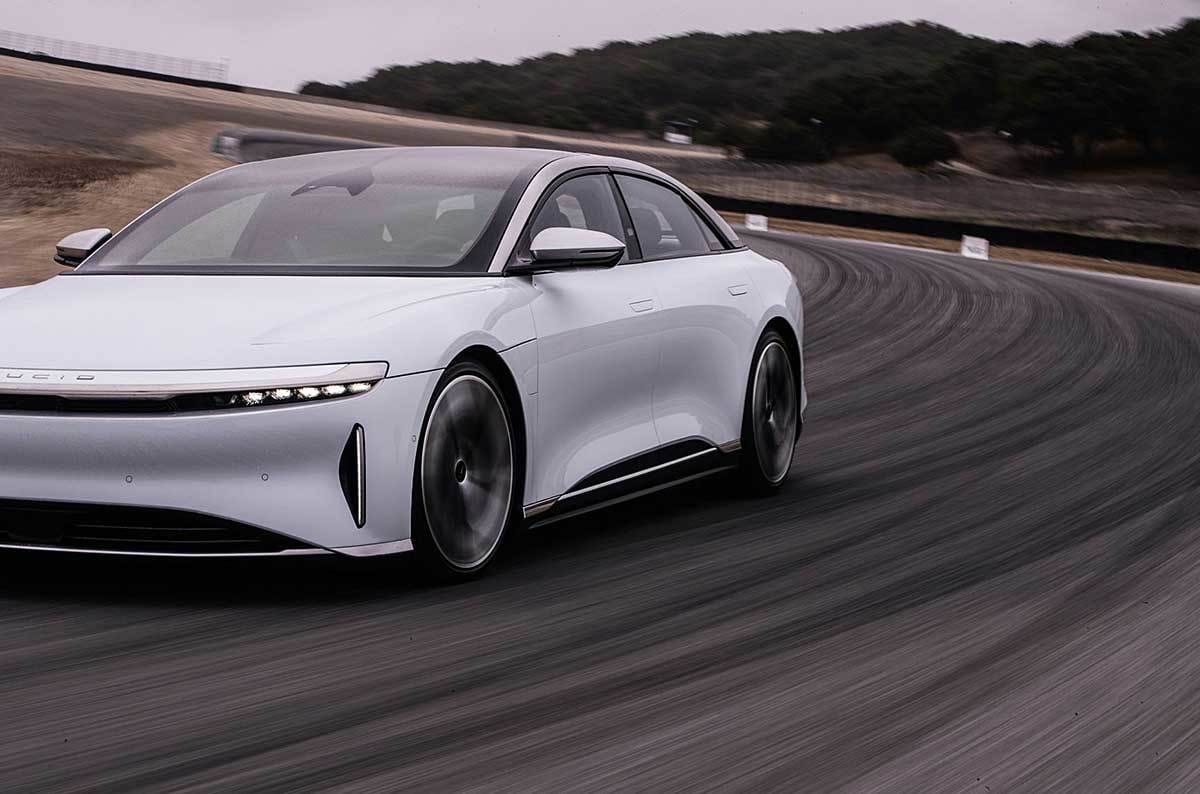
EVs typically use regenerative braking systems, which can lead to faster tire wear.
“It’s also crucial that tires fitted to EVs offer ultimate efficiency, as range is critically important in the current EV environment given there isn’t a robust charging infrastructure in place and battery life is limited,” says Todd Buxton, vice president of product engineering at Bridgestone Americas Inc.
“We are focused on designing tires that offer unprecedented low rolling resistance without compromises on wet, winter or wear performance, but this is a delicate balance,” warns Buxton.
For instance, Buxton points out that the increased weight of EVs is a key factor, with Bridgestone developing, in partnership with car manufacturers, high-load tires that are able to carry the higher weight of powerful electric and hybrid vehicles.
“Our engineers must consider these higher loads when optimizing designs to manage the increased stress and strain on the tire,” explains Buxton.
Formula E racing has helped Michelin engineers develop high-performance tires for road cars. Photo courtesy Michelin
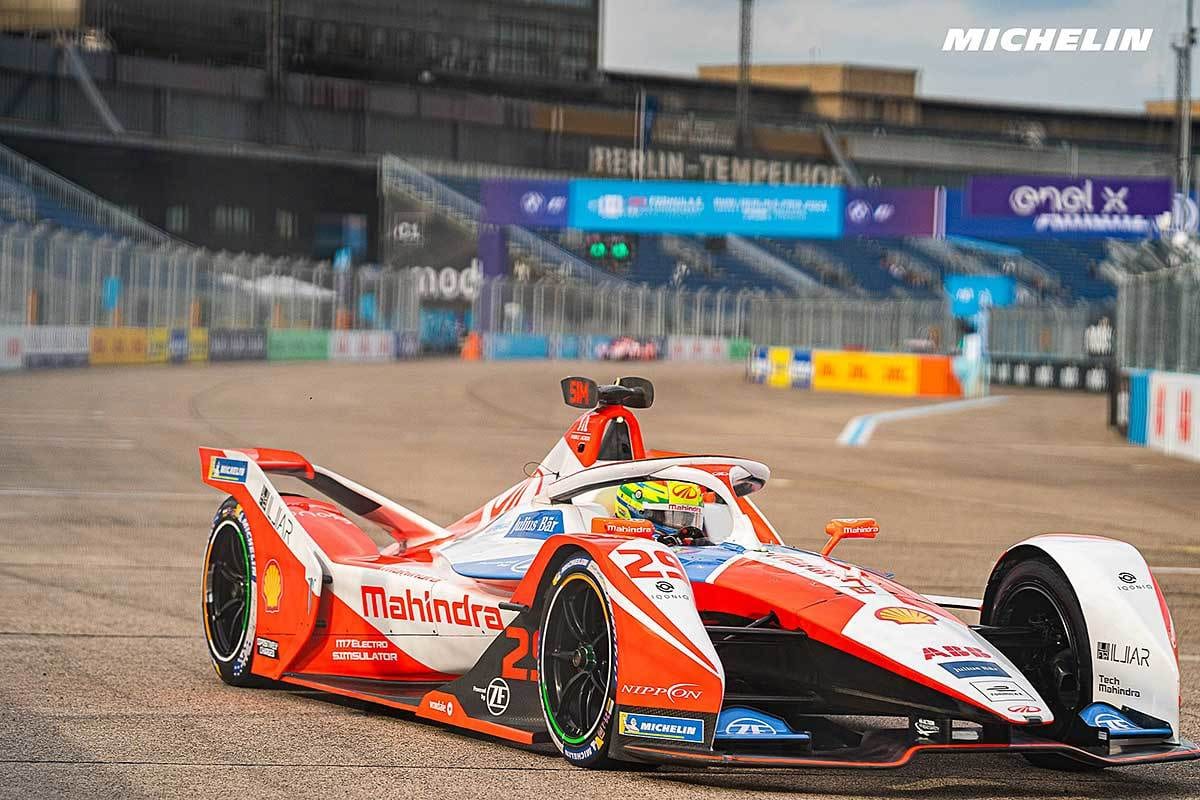
While tire design has long been a collaborative process involving OEM vehicle engineers and engineers from Bridgestone, Buxton says electrification is coming at a pace faster than many anticipated.
“The product portfolios of our customers will be transitioning rapidly, which will require a new way of partnering together,” notes Buxton. “We will utilize advanced virtual models and a system engineering approach to optimize designs to reduce the product development cycle. It will require a new level of collaboration, with more sharing of rich data such as vehicle models, usage profiles and tire models.”
According to Buxton, Bridgestone’s ENLITEN technology reduces tire rolling resistance by up to 30 percent and decreases overall tire weight by up to 20 percent. It also extends the driving range of EVs and contributes to reduced environmental impact, thanks to improved resource productivity. The tires are currently used on vehicles such as the Audi e-tron and Q4 e-tron, the Fisker Ocean, and the Volkswagen ID.3 and ID.4.
The tires will also be used on the Lightyear One, the world’s first long-range solar electric vehicle. In fact, Bridgestone developed custom-engineered Turanza Eco tires for Lightyear One, combining its lightweight ENLITEN and ologic technologies. That enables engineers to reduce weight through the use of fewer raw materials throughout the manufacturing process, while cutting rolling resistance through innovative treads, larger diameters, high inflation pressures and slim designs. The very low rolling resistance of the tires also means Lightyear One can benefit from a lighter battery.
General Motors plans to start using airless tires by 2024. Photo courtesy Michelin
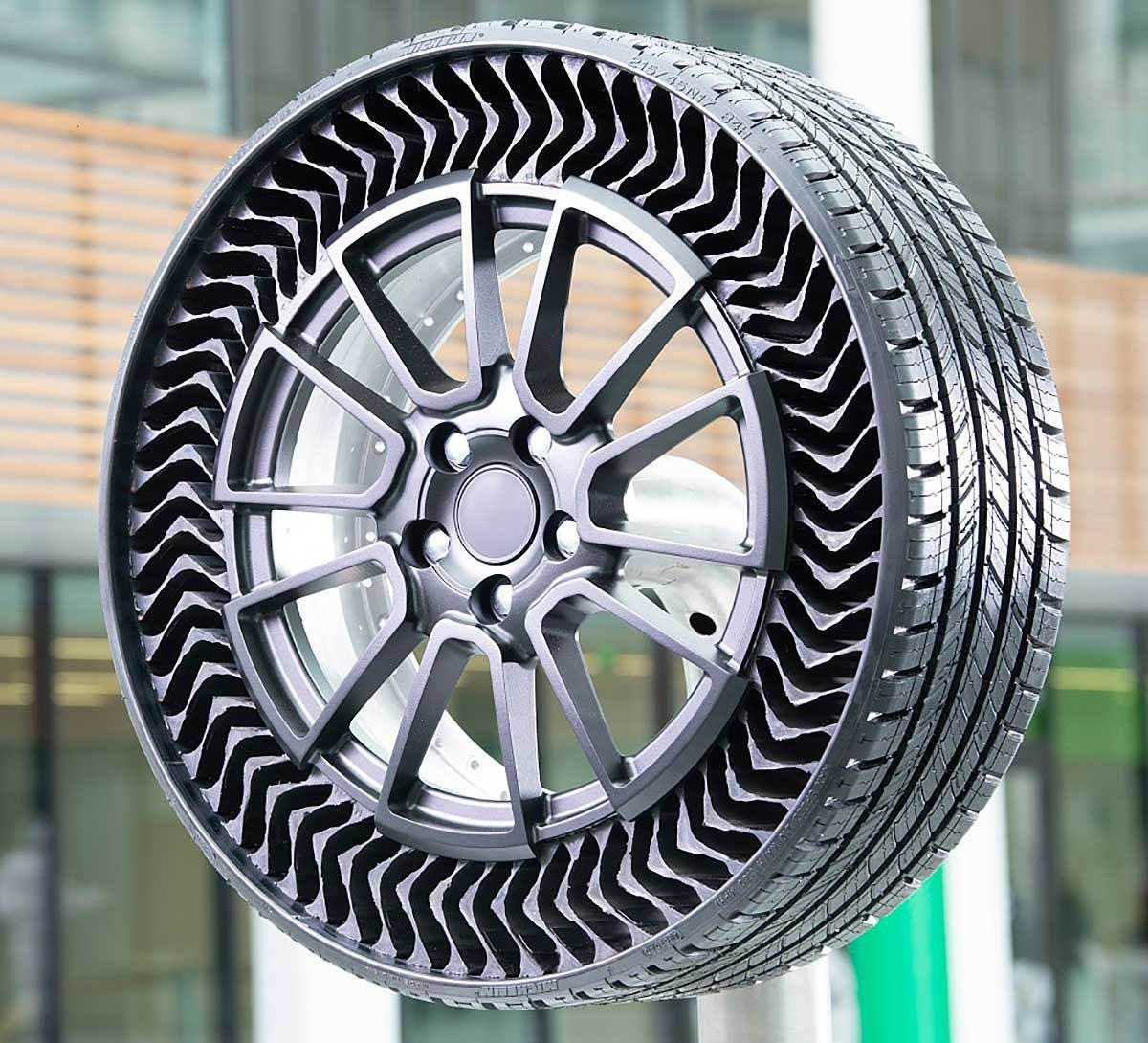
AVs Need Unique Tires
Tires fitted to autonomous vehicles need to be designed for maximum durability, long wear life and extended mobility should a puncture or loss of pressure occur. An AV’s ability to stop and avoid obstacles is highly dependent on the capabilities of its tires. That’s an emerging application where airless tires may be beneficial, due to additional redundancy and greater durability.
“We anticipate AVs will be largely fleet owned and operated in the future,” says Buxton. “With no driver behind the wheel, there will be no one to change a flat tire. Downtime will be more than inconvenient—it will be costly.”
In addition to tires, technology that measures air pressure, wear life, road conditions and more will be paramount for successful autonomous vehicle operation.
“These [systems] will relay valuable information to fleet operators, allowing them to monitor tires in real-time and ultimately predict maintenance to avoid downtime and keep AVs on the road,” explains Buxton.
“Once you move toward a service platform where you have a fleet of AV vehicles coming and going, any types of unpredicted service requirements, like a flat tire, becomes a very big barrier to total cost of ownership and operation times,” adds Michael Rachita, senior program manager for nonpneumatic tires at Goodyear Tire & Rubber Co. “An airless solution has a greater opportunity to be redundant, because if one of the veins were to break, the driver can lose a few and it doesn’t affect performance.”
The Lightyear One uses tires that cut rolling resistance through innovative treads, larger diameters and high inflation pressures. Photo courtesy Bridgestone Americas Inc.
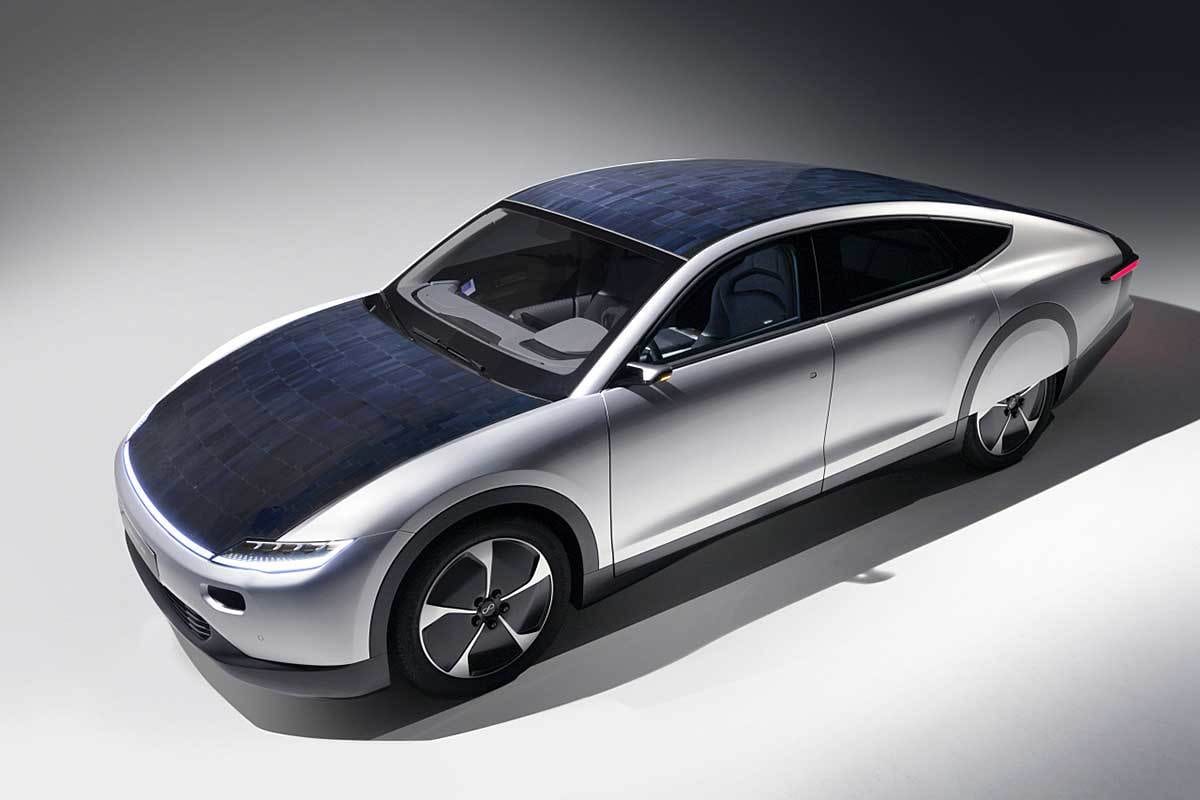
Rachita sees airless tires fitting into certain categories where AV technology will be used off-highway, such as mining and construction, and other places where users deal with debris and need a puncture-proof product.
“It’s such a challenge to redevelop a highly optimized product like a traditional tire—there’s 100 years of innovation there and it works really well,” notes Rachita. “To think we’re going to go in there and do it without air is a huge challenge.”
Goodyear recently unveiled what the tire of tomorrow may look like. Its Eagle 360 spherical concept is a ball-like tire that was showcased on the Citroën Autonomous Mobility Vision prototype vehicle, which features an electric multidirectional platform. The Citroën Skate can accommodate multiple types of pods, allowing it to cater to a variety of mobility applications.
“The Eagle 360 prototype is compact and its shape makes it agile and maneuverable, ideal for future urban and autonomous mobility [uses],” claims Hans Vrijsen, managing director for original equipment at Goodyear.
New technology reduces tire rolling resistance by up to 30 percent and decreases overall tire weight by up to 20 percent, while extending the driving range of EVs. Photo courtesy Bridgestone Americas Inc.
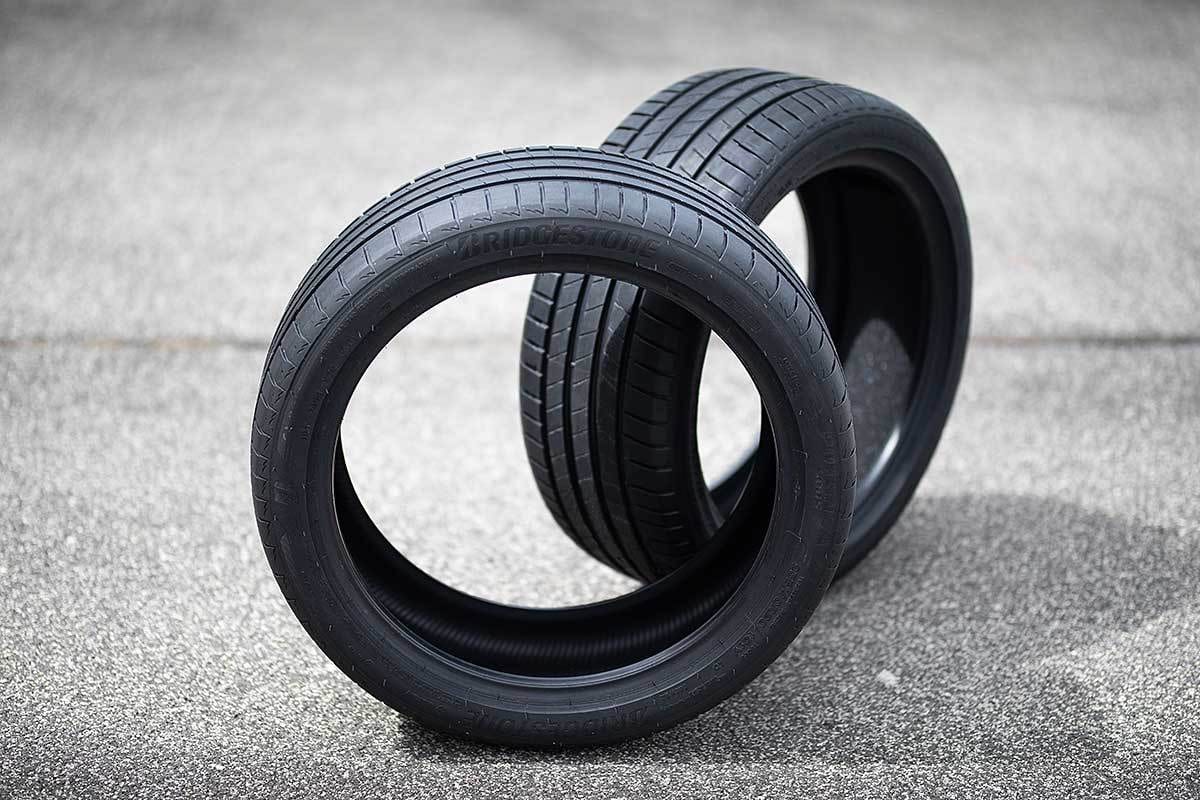
According to Vrijsen, the Eagle 360 offers several benefits, including:
Goodyear engineers also worked with Citroën on an autonomous vehicle concept to mark the French automaker’s centennial. The Citroën 19_19 is equipped with Goodyear C100 prototype tires.
Each C100 tire is nearly 1 meter in diameter, compared to 60 centimeters for an average tire. This larger diameter would lower rolling resistance to increase the energy efficiency and range of the vehicle.
The C100 features a nature-inspired tread design that provides both comfort and handling benefits. With nearly 100 more blocks in its tread band than an average tire, the C100 would deliver a far quieter ride. In addition, the tread groove compound is inspired by the attributes of a natural sponge.
“With its ability to stiffen in the dry or soften in the wet, this adaptable tread would enhance handling, grip and braking in both conditions,” explains Mike Rytokoski, chief marketing officer for Europe at Goodyear.
High maneuverability. With its spherical shape, this multiorientation tire can move in all directions, delivering both maneuverability and passenger comfort. The Eagle 360 prototype provides a smooth ride by creating a fluid, lateral movement that enables AVs to easily overtake obstacles.
Maintenance-free. The Eagle 360 is a nonpneumatic tire. With no need for pressure monitoring or risk of puncture, it minimizes downtime.
Long-lasting. With four times the tread surface of a standard tire, the Eagle 360 would also wear four times slower than a traditional tire, leading to less frequent replacement.
Extended range. By using a stiff inner structure and low rolling resistance rubber compound, the Eagle 360 is designed for low deflection at the point of contact with the road. This can contribute to reducing energy loss and lowering rolling resistance, which can help to extend the battery range of an electric vehicle.
Consistent grip. By using hexagonal siping, the Eagle 360 is designed to provide consistent grip independent of the driving direction.
Larger diameter tires could lower rolling resistance to increase the energy efficiency and range of electric vehicles. Photo courtesy Goodyear Tire & Rubber Co.
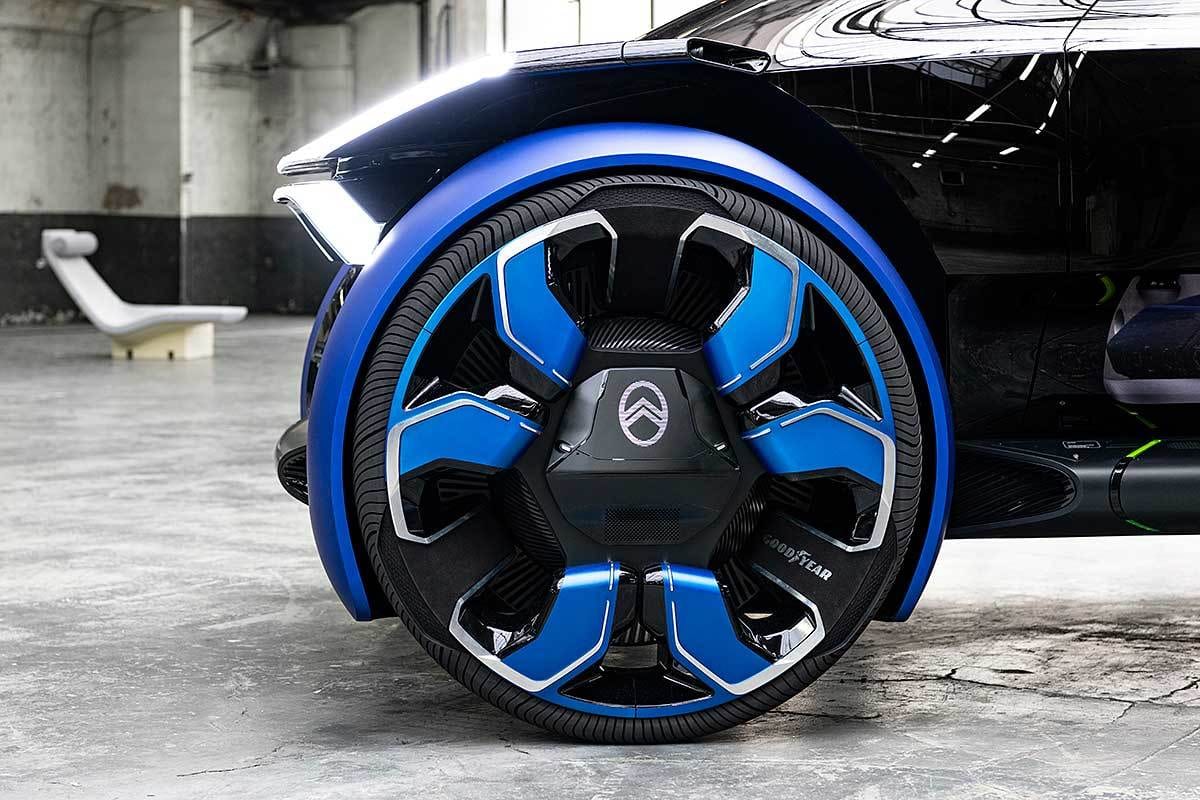
Embedded Sensors
Goodyear engineers have also been developing embedded sensor technology. For instance, the C100 tire would be able to sense road surface and weather conditions, then communicate directly with the Citroën 19_19’s autonomous control system to improve driving performance. It would also feature advanced active wear technology to assess the state of the tire, allowing for proactive tire maintenance.
Goodyear recently unveiled a tire intelligence system called SightLine. The technology, which is initially available to monitor cargo van fleets, features a suite of services designed to predict which issues will arise before they happen, and then proactively alert users.
The predictive maintenance system can help address challenges facing drivers and fleet managers today, such as predicting breakdowns, minimizing downtime, and monitoring tire pressure and wear for enhanced safety and more cost-efficient mobility.
“In the future, Goodyear SightLine technology will not only provide feedback on the tire, but provide feedback on road conditions, enabling connected, autonomous mobility,” says Rachita. “Initial testing has shown integrating the technology into a vehicle’s controls system can reduce stopping distance loss by 30 percent.
“A wear rate predictor is something we’re working on through a digital algorithm, which is a sensor that will tell you in real time where the wear is,” adds Rachita.
As this cloud-based connectivity evolves, Rachita predicts there will be applications where tire sensor data can be sent to municipalities to figure out things such as what mile of road needs to be plowed or salted in the wintertime.
“The future is sensing the road through that tire to get the information to the consumer or the organization,” says Rachita. “But, it’s going to be a huge effort to create usable intelligence from the tires.”
To help tackle this challenge, Goodyear is setting up innovation hubs in several parts of the world, beginning with Silicon Valley.
“We have an innovation lab in San Francisco that started with one person who had to go find data scientists and coders,” explains Rachita. “Now, that’s grown to a fully staffed organization.”
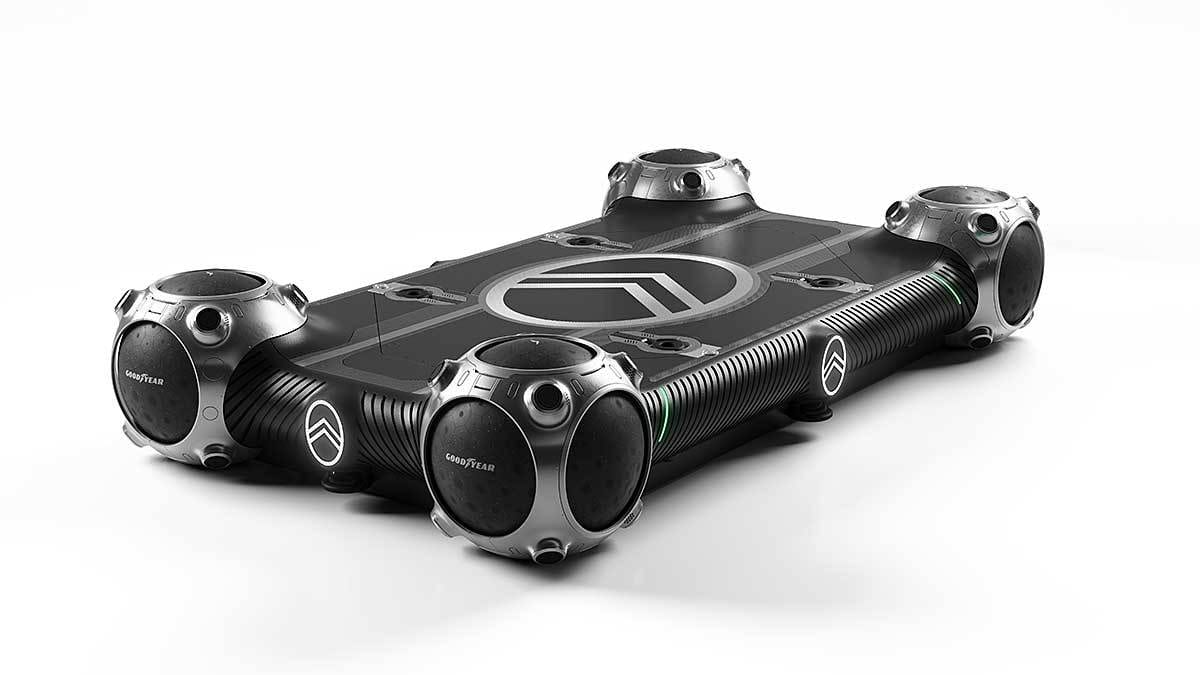
Spherical tires could make autonomous vehicles more agile and maneuverable. Photo courtesy Goodyear Tire & Rubber Co.
Sustainable Tires
Tire manufacturers are also looking for new ways to become more sustainable. That’s no mean feat when your central product is designed to be rugged to the point of near indestructability. To address the issue, tire engineers are now turning to sustainable plant-derived materials as substitutes for a variety of traditional rubber components.
“We continuously invest in developing new technologies, alternative materials and environmentally friendly production processes,” says Holger Lange, Ph.D., head of tire development for original equipment business at Continental AG. “We put in a lot of efforts here, centered around the strategic topics of climate action, low-emission mobility, the circular economy, and sustainable supply chains, thus embracing all phases of the value chain.”
Continental’s goal is to switch its worldwide tire production to completely sustainable materials by 2050 at the latest. At the recent IAA Mobility trade show in Munich, the company unveiled the Conti GreenConcept.
It features a high percentage of renewable and recycled raw materials, including silica from the ash of rice husks, various vegetable oils and resins, natural rubber from regionally grown dandelion flowers, and responsibly sourced natural rubber.
“We were also able to replace a large share of conventional raw materials such as rubber, carbon black and steel by recycled alternatives,” claims Lange. For instance, the GreenConcept also features the first-ever use of polyester yarn from recycled polyethylene terephthalate in the manufacture of tires.
“We rely on innovative lightweight construction and a weight-optimized tread strip that can be retreaded multiple times, with a minimum investment of both time and materials, a specially designed sidewall and a new casing featuring a weight-optimized core, among other things,” explains Lange.
According to Lange, this leads to significantly lower material consumption, as well as greater sustainability under real driving conditions.
Many autonomous vehicles will use embedded sensors to monitor tire wear and improve performance. Illustration courtesy TKD Corp.
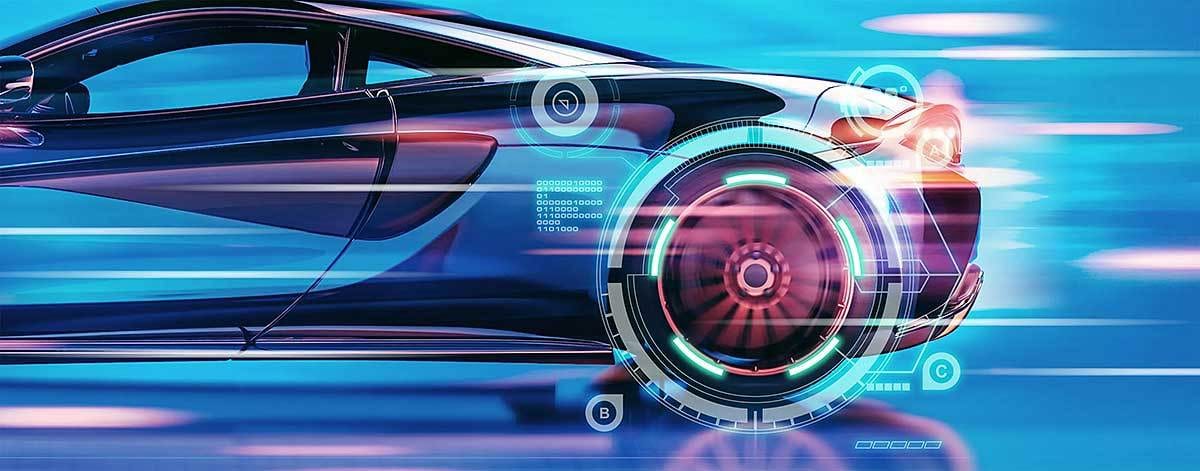
In view of its special lightweight design, the GreenConcept is destined for use in sensor-equipped smart vehicles. By means of on-board sensors, intelligent vehicles of the future will continuously monitor their surroundings to detect and avoid potential obstacles such as curbs, thus preventing damage to elements like tire sidewalls. This means that less material can be used in making the tire, particularly for the sidewalls.
In Europe, Continental is supplying Ford Motor Co. with an EcoContact 6 summer tire that has been further improved in terms of rolling resistance and now surpasses the EU Tire Label’s “Class A” highest ranking by more than 15 percent. Maximum range of EVs can be increased by as much as 3 percent to 4 percent as a result.
Bridgestone is also expanding the use of sustainable materials across its full tire portfolio, including tires for next-generation AVs and EVs. It’s part of an ongoing effort to achieve sustainability targets of becoming carbon neutral and making tires from fully renewable materials by 2050.
“As mobility evolves, tires will play a key role in creating safe, sustainable [products] by reducing a vehicle’s overall environmental footprint,” predicts Buxton.
As the company progresses on its sustainability journey, Bridgestone engineers are exploring a number of renewable materials, including natural rubber made from guayule, a desert shrub, soybean oil and rubber filler from biomass.
Tire engineers are turning to sustainable plant-derived materials as substitutes for a variety of traditional rubber components. Photo courtesy Continental AG
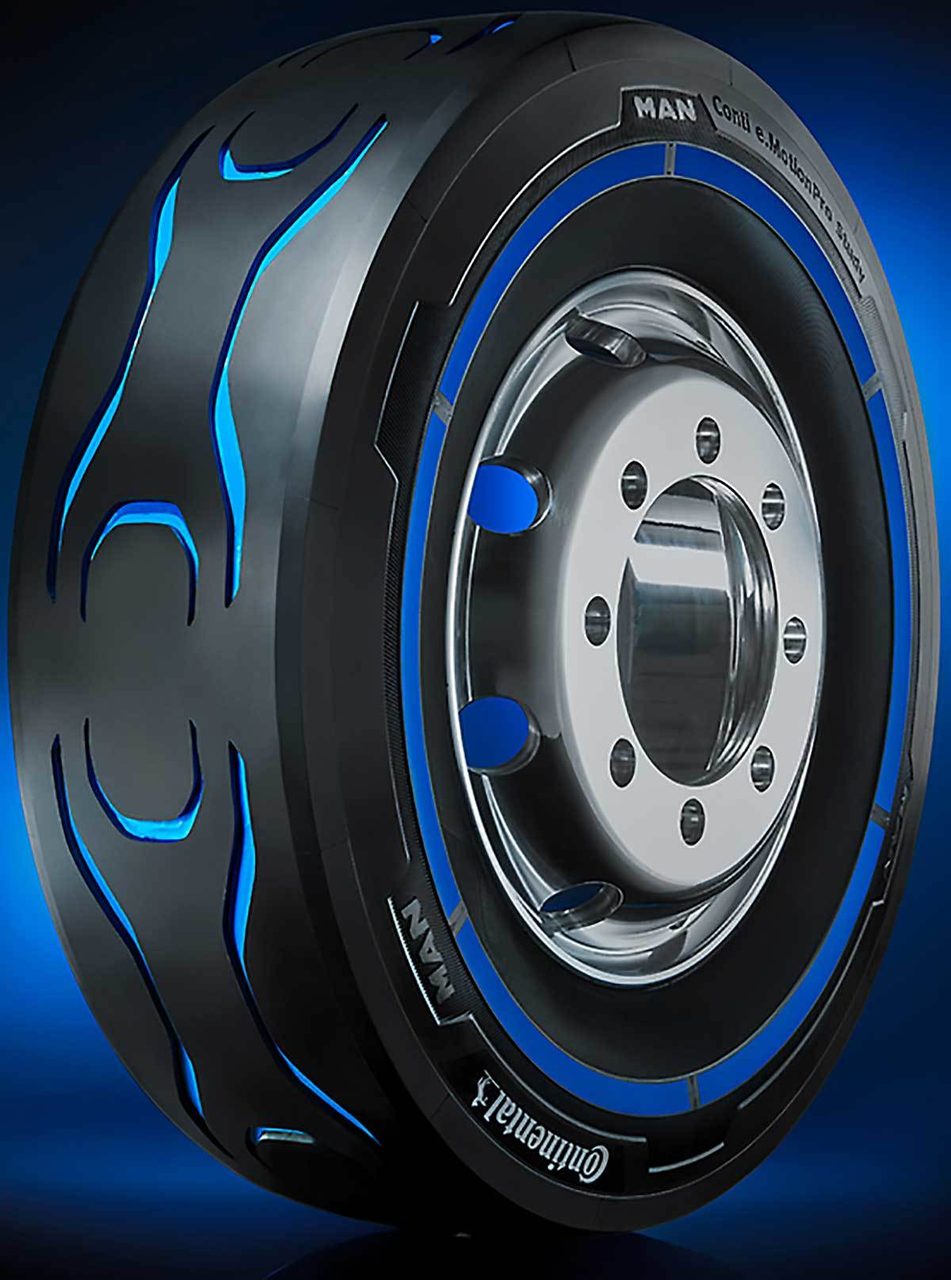
“We’re also focused on advancing the circular economy by increasing our use of recyclable materials in our tires, while also reducing our overall material usage,” says Buxton. “What’s just as important is that we are working to extend the useful life of tires through retreading and developing ways to ensure end-of-life tires find new purpose and are removed from the waste stream.”
According to Pirelli’s Misani, the topic of sustainability means making a more careful selection of innovative materials, adopting cutting edge production processes and using new technologies.
By 2025, Pirelli expects more than 40 percent of its tires to be made of renewable materials, more than 3 percent made from recycled materials, and less than 40 percent made from fossil-derived materials. By 2030, the use of renewable materials will exceed 60 percent, recycled materials will be more than 7 percent and materials derived from fossils will be less than 30 percent.
Misani says tires of the future won’t necessarily have to be lighter or more durable. Instead, they will need to be products that are capable of carrying out a wide variety of complicated tasks—absorbing less energy, putting more force on the ground, supporting big loads and making less noise.
“There will always be a goal of reducing more weight, which is desirable not just in terms of performance but also to help sustainability,” notes Misani. “That will also be the case with tires for conventional cars over the coming years, as well.
“To the casual observer, these tires won’t look a lot different, but the package of technologies needed to hit those targets is extremely innovative,” adds Misani.
DECember 2021 | ASSEMBLYMAG.com

Scroll to
read full story
